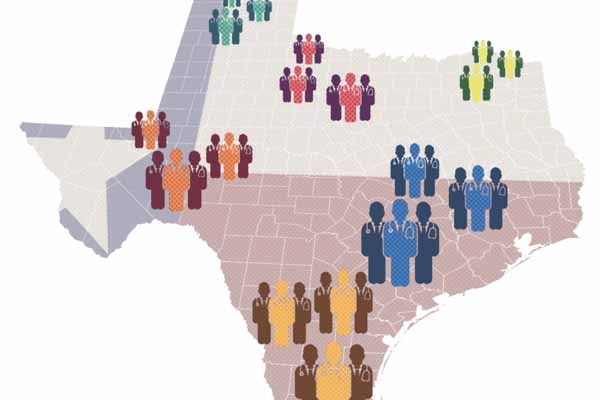
If the 2023 Main Residency Match was a patient, you’d have to say that the vital signs were strong.
This was the 22nd consecutive year the Match could claim the largest number of total positions in the program’s history, with 40,375 certified spots, according to the National Resident Matching Program (NRMP), the private organization that marked its 70th year of running the Match.
That number is up 1,170 over 2022, part of a 14.8% rise in the last half-decade. Meanwhile, the total number of first-year residency positions rose by 1,148, up 3.2%, to 37,425.
Both the U.S. and Texas face a growing shortage of primary care physicians. But the 2023 Match recorded an all-time high number of primary care positions offered, NRMP says. There were 571 more primary care positions than in 2022, up 3.2%. Those positions have increased 17% over the last five years.
Texas Match data from the state’s 13 medical schools with graduating classes will be available in late spring.
“We were excited to see the record number of primary care positions offered in this year’s Match and how the number of positions has consistently increased over the past five years, and most importantly, the fill rate for primary care has remained steady,” NRMP President and CEO Donna L. Lamb said in a press release.
Total match applicants also rose, increasing by 481, or 1%, to 48,156. But that higher number highlighted one of the few differences is this year’s Match, NRMP officials say.
Compared with last year, there were 236 fewer U.S. allopathic seniors registered for the Match – 19,748 in all. The rise in overall registrants was fueled by two other groups: non-U.S. citizen international medical graduates, whose numbers rose by 707; and osteopathic seniors, whose numbers rose by 153.
Of the total positions offered, 37,690 were filled for a fill rate of 93.3% – in line with recent years. Overall, there were 2,685 unfilled positions, up 18.7% from 2022, NRMP says. Of those, 2,658 were offered in the Supplemental Offer and Acceptance Program (SOAP).
As usual, results among specialties differed. After four decades of steady increases, emergency medicine suffered an unusually sharp drop in popularity, continuing the decline that started last year. It placed 3,010 positions and had an unprecedented 554 unfilled positions, an increase of 335 more unfilled positions than in 2022, NRMP data shows.
The drop in filled positions over the last two years has been tied to several factors, including fallout from COVID-19 and increased clinical demands. It prompted 11 emergency medical organizations – including the American College of Emergency Physicians and the American Academy of Emergency Medicine – to form a task force to study the problem.
“The task force is working to identify factors that have led to an increase in unfilled [emergency medicine] positions and to develop strategies to mitigate them,” the coalition announced in a press release.
Other specialties had more success in the initial phase of the Match. At least four specialties with 30 first-year positions or more filled all available spots: orthopedic surgery, plastic surgery (integrated), radiology – diagnostic, and thoracic surgery.
Still others showed how popularity can change. Even 10 years ago, psychiatry was seen among medical students as an undesirable specialty in the Match, an attitude that began to change by the late 2010s. In the 2023 Match, psychiatry had 99% of positions filled in the initial match.
Research shows that residents who train in Texas have an 80% likelihood of setting up practice here as well, and the Texas Medical Association has spearheaded efforts to expand the state’s residency programs. Physician-trainees in Texas have grown by 39.7% over the past decade to 10,332, and the number of programs has increased by 48.7% to 840, according to data compiled by TMA. That is faster than the national growth rate of 33.4% for the number of residents and 41.2% for the number of programs.
TMA also backed state legislation that has created more than 465 first-year residency slots since 2014 through state grants to help keep Texas medical school graduates in Texas.
Keep track of medical education news and trends via TMA’s dedicated workforce webpage.